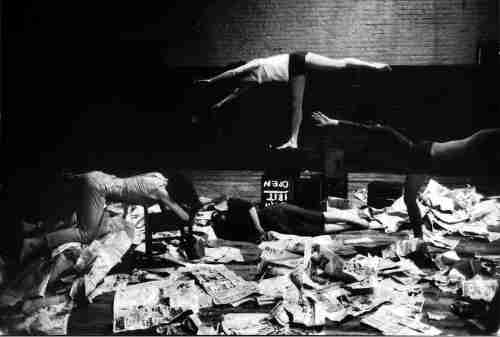Michelangelo’s Battle of Cascina, one of his biggest undertakings, depicts a battle between Florentine and Pisan forces, resulting in the victory of the former. The Florentines fought without any armor because of the unforgiving summer heat and this gave Michelangelo a chance to employ his genius in depicting the male nude in full splendor. Michelangelo’s Battle of Cascina is also an unfinished work; only a preparatory sketch was made before the artist was called to Rome.
Leonardo da Vinci’s The Battle of Anghiari is another example of a Florentine victory. A fresco, da Vinci experimented with directly applying oil paints with a thick undercoating mixed with wax. To preserve the paints from dripping down, the artist lit two large braziers, which unexpectedly superheated the wax, and the whole mural melted down. Da Vinci’s The Battle of Anghiari was to be his biggest, most substantial painting, and just like Michelangelo’s Battle, it remained an unfinished work.
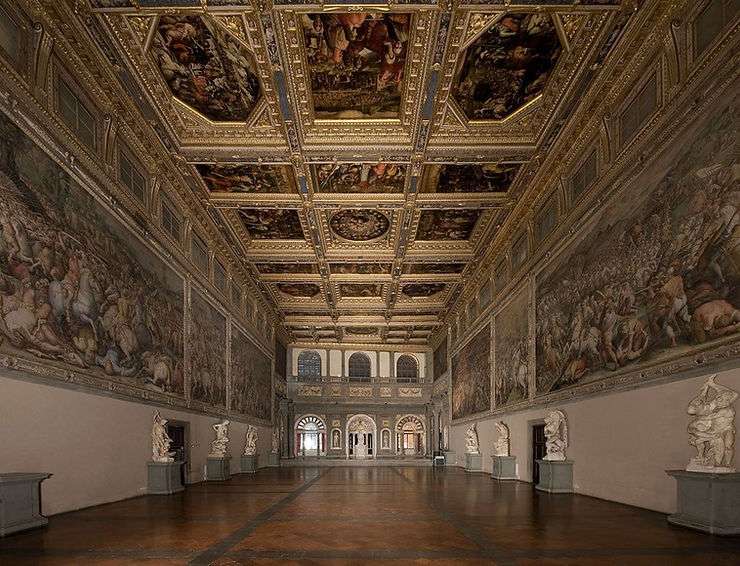
Besides the similarity in themes and final predicament, however, an interesting course of events bind the two paintings together. The two artists, while commissioned individually, were making these with their backs turned to each other – literally, and figuratively. The commissions were for Florence’s Hall of the Five Hundred, and the two battles were to be depicted on opposite walls. This meant Michelangelo and da Vinci were painting under the same roof. Yet this was also the only time they would be working together.
Both artists had been involved in a series of bitter public spats. Michelangelo famously sneered at da Vinci once in the streets for never finishing a statue of a horse in Milan. Da Vinci, for his part, suggested covering up David’s virility – a symbolic castration of his rival. Both artists were the human personification of everything the Renaissance in Italy was. And such magnificence only came at the cost of a bitter rivalry.
‘You were shit in the 80s’
When Andrew McIntosh’s exhibition opened at the James Freeman Gallery, it was an eerie world that greeted viewers. The paintings that Mackie highlighted were placed in derelict, abandoned houses made on the canvas – a sort of post-apocalyptic setting which is only populated by works of art. Besides this gothic curiosity, however, one question stood out: what are the paintings that Mackie chose to showcase?
These were paintings that were in the eye of the storm between artists and their rivals. One pair references the feud that emerged between Lucian Freud and Francis Bacon. Another pair points to the spat between David Hockney and Damien Hirst when Hockney at the 2010 Royal Academy show called Hirst’s work as “insulting to skillful craftsmen”.

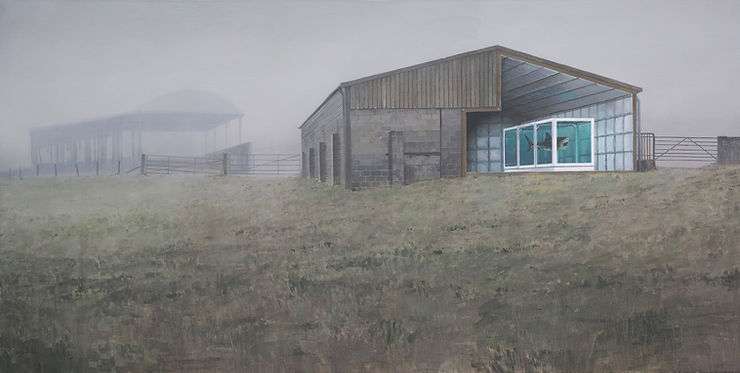
Mackie’s settings are a comment on the deteriorating relationships of these artists, and the presence of the artworks inside these structures doesn’t feel like an implausible situation, for art has survived through generations of conflict and change. Rivalries then are not just a tabloid feature for evening-tea gossip, but on several occasions, a very prominent catalyst that drives creativity (however unfortunate the occasions). Here’s a look at some of the art world’s most fascinating rivalries.
Graffiti Wars
People usually remain anonymous to get away from publicity and controversy. It seems nobody gave Banksy and King Robbo the memo. The rivalry between the two artists began when Bansky destroyed a Robbo by stenciling a workman plastering the original work. Robbo’s retort was defacing Banksy – the workman was now seen painting ‘KING ROBBO’. The final strike came when the letters ‘FUC’ emerged next to ‘KING’, courtesy Banksy.
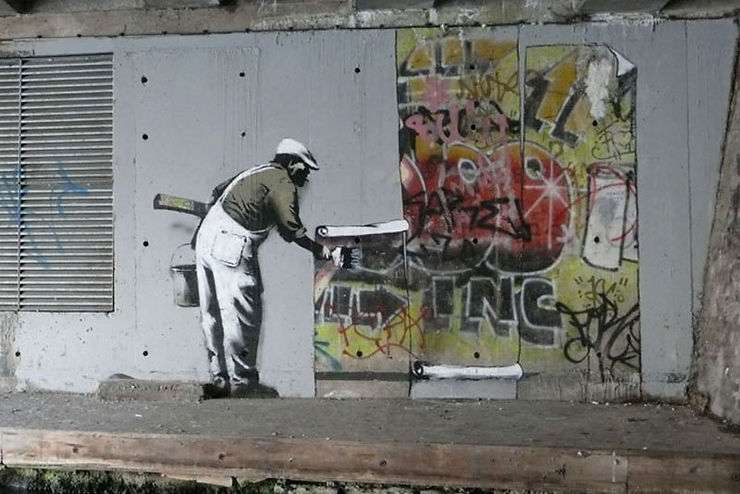
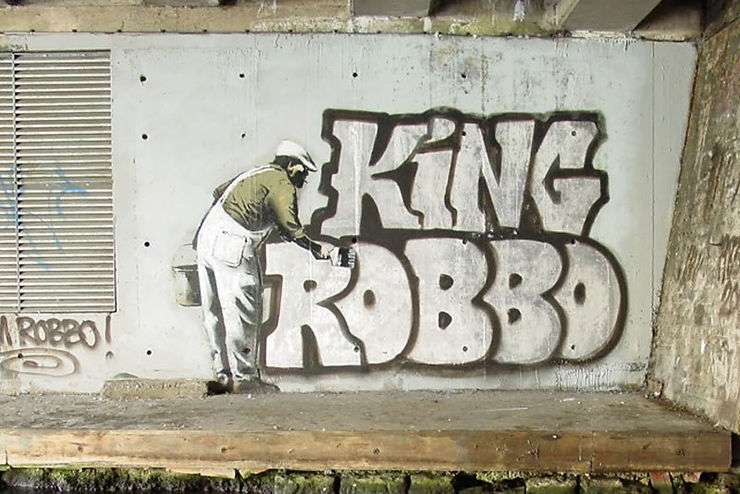
This tit-for-tat continued throughout their careers – including Robbo painting a graffiti with a gravestone marked “R.I.P Banksy’s career” – until King Robbo’s untimely death. In a city where life never stopped being mechanical, these spaces of graffiti served to remind us of an alternate world of creativity, of escape.
The devil is with the artists
Aside from being an influential artist, Caravaggio also lived the life of a poet, as is evinced in the following (graphic) lines:
John Bags, you haven’t a clue that your paintings are woman’s work.
I’d like to see you never earn a worth-less penny with them.
Because with as much cloth as it would take
to make yourself a pair of baggy trousers,
you’ll show everyone what sh*t really is.
The honor of this ‘John Bags’ was with the artist Giovanni, a rival of Caravaggio. In 1602, Caravaggio had completed his work Amor Vincit Omnia, which was part of a highly coveted Church commission that Giovanni wished to secure. In response to Amor, Giovani painted a highly derivative work Divine and Profane Love that superimposed the face of Caravaggio onto the Devil. Outraged, Caravaggio wrote a series of crude poems, suggesting Giovanni’s work to be used as toilet paper. Giovanni had none of it and sued Caravaggio in court for libel – successfully jailing him for two weeks.

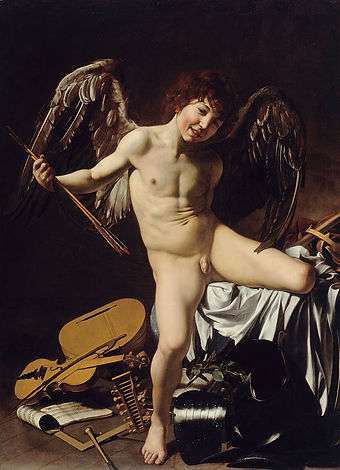
Civilized fighting
Sometimes feuds ran deeper than appearances. JMW Turner and John Constable’s rivalry was one such. The two stalwarts were in a constant state of behind-the-back remarks. Turner was humble about his predecessors, yet privately, was in “all-out war” when it came to his contemporaries. Similarly, while Constable publicly praised his rival, in private criticized Turner’s work as being ‘just steam and light’.
In the end, all it took was a daub of red paint to make the difference. At the Royal Academy exhibition in 1832, Constable exhibited his The Opening of Waterloo Bridge, a painting he had been working on for almost 15 years. Turner, on the other hand, was presenting a somber seascape Helvoetsluys, which against Constable’s work felt to be lacking in color. As fate would have it, both paintings were displayed side-by-side.
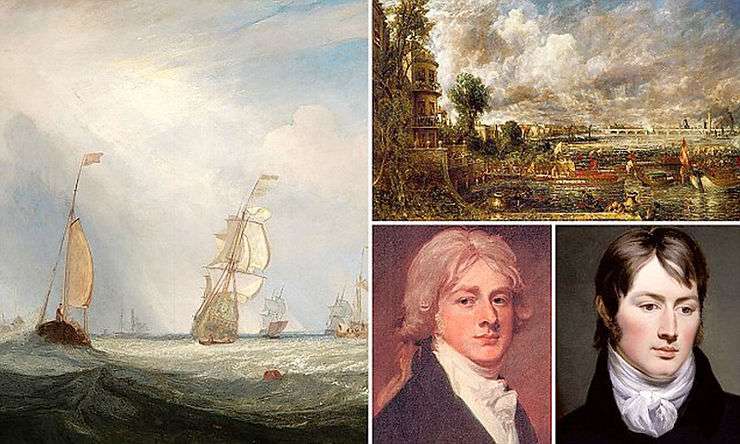
Turner entered the room and quietly painted a red buoy in the middle of his canvas. The presence of the buoy cemented Turner’s legacy as an impulsive genius, overshadowing Constable’s work. A mortified Constable was recorded saying “He has been here and fired a gun”.
Not your average cup of joe
Yet Constable’s resignation wasn’t found with everyone. In 1832, the New York Times wrote of a party, where an artist went up to this one person, raised his voice, and said “Drawing, sir, drawing is honesty! Drawing, sir, drawing is honor!” and spilled his cup of coffee all over the other person’s shirt and waistcoat. Seizing his hat in a fury, he was heard saying “This is too much! I shall go; I will not let myself be insulted any longer”.
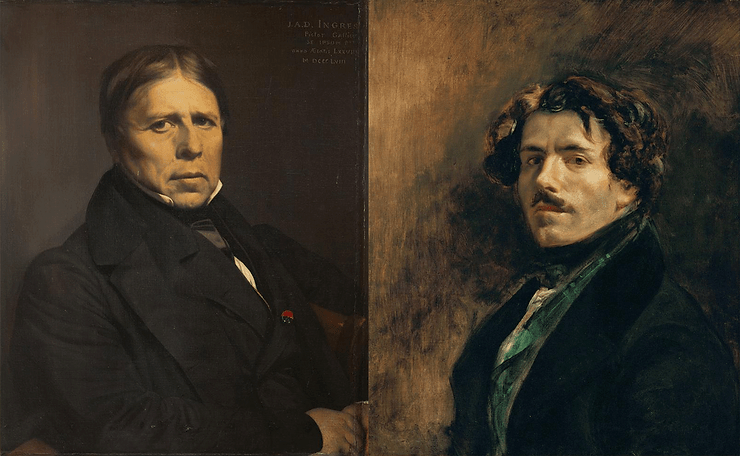
This flight of agitation was at the hands of Jean-Auguste-Dominique Ingres; his wrath towards Eugene Delacroix. Their feud was a question of their era: could traditional neoclassicist works and non-conformist Romantic ones deserve equal respect? Ingres’ traditionality with line and form found resentment against Delacroix’s brilliant use of color and animations.
A threat to French morality and classical values, Ingres was quoted saying “I cannot look at Delacroix”.
Critically acclaimed feud

Not all rivalries were about artists – and critics like Clement Greenberg and Harold Rosenberg were also in the ring of fire. Greenberg favored formalism, concerned only with formal matters like depicted shapes, lines, and colors to make a judgment about art, while Rosenberg advocated what he termed as ‘Action Painting’ – that painting was no longer a picture, but the recording of an event.
Greenberg gravitated towards the work of Jackson Pollock; Rosenberg favored Willem de Kooning. Various anecdotes describe how the two men had to be kept separate at parties, yet in print, no punches were held back. Greenberg famously lambasted Rosenberg for “perversions and abortions of discourse: pseudo-description, pseudo-narrative, pseudo-exposition, pseudo-history, pseudo-philosophy, pseudo-psychology, and—worst of all—pseudo-poetry.”
For all these comical and incendiary fights, however, there came along the process the creation of great art. Greenberg and Rosenberg’s spars led to the formal growth of American Abstract Expressionism, Banksy and King Robbo’s feud led to greater acceptance of graffiti as a proper art, and the same can be said for all historical feuds – whether it’s Freud or Bacon, Gauguin or van Gogh, or Picasso or Matisse. What it does point to then, is that beyond such squabbles exist another genre of art – that of rivalry.
Feeling bitter? If such fights aren’t your cup of tea, head over to our feature about the most wholesome friendships in the world of art, here!



